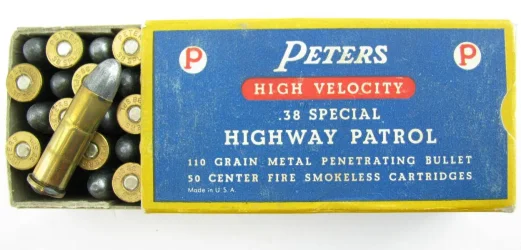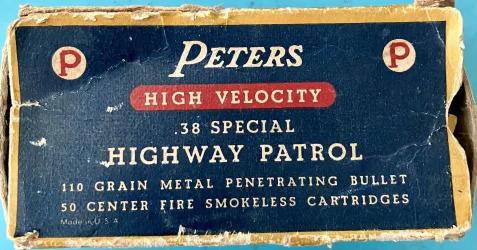Attached picture of Rem - UMC Hi-Way Master 110 grain 38-44 that was also sold as Peters Highway Patrol.
The 38-44 is in my odd cartridge bin while the Peters belongs to a friend. There's at least one discussion about zinc bullets on the forum. Old American Rifleman articles talk about them in handguns and rifles.
From a 1940 article by Arthur Caswell extolling the virtues of a custom Colt Detective Special:
"Furthermore, while I do not recommend the practice, I
have fired some very heavy loads in the Detective Special,
including the .38-44 cartridge and Remington 110 zinc
bullet, without experiencing any difficulty or painful
recoil."
The 38-44 is in my odd cartridge bin while the Peters belongs to a friend. There's at least one discussion about zinc bullets on the forum. Old American Rifleman articles talk about them in handguns and rifles.
From a 1940 article by Arthur Caswell extolling the virtues of a custom Colt Detective Special:
"Furthermore, while I do not recommend the practice, I
have fired some very heavy loads in the Detective Special,
including the .38-44 cartridge and Remington 110 zinc
bullet, without experiencing any difficulty or painful
recoil."






